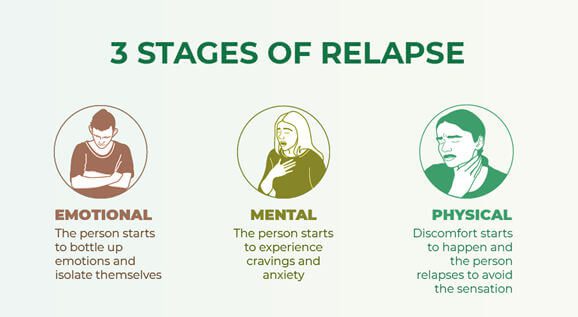
This blog post was written by Deborah “Lea” Humphrey, LPC, SA-IT, a behavioral health therapist at the Beloit Area Community Health Center.
Millions of Americans ages 12 and over are battling some type of addiction in their lives
Often-times, individuals, who seek treatment and start the recovery processes, get frustrated, angry at themselves, experience guilt, and feel hopeless due to relapse occurrences. Knowing triggers and raising awareness of triggers, to change thought patterns, is one part of winning the battle.
Awareness is a powerful tool. Always remember when starting new skills to practice. Practice brings comfort, which brings confidence.
Remember telling yourself you are NOT going to do something activates that rebellious part of yourself. Affirming to yourself simply “I do not use, drink, etc.”, is part of the processes of changing thinking patterns.

Statistics on drug use and abuse
The National Center for Drug Abuse Statistics (NCDAS) reports the following information on their website:
Among Americans aged 12 years and older, 31.9 million are current illegal drug users (used within the last 30 days).
- 11.7% of Americans 12 and overuse illegal drugs.
- 53 million or 19.4% of people 12 and over have used illegal drugs or misused prescription drugs within the last year.
- If alcohol and tobacco are included, 165 million or 60.2% or of Americans aged 12 years or older currently abuse drugs (i.e., used within the last 30 days).
- 139.8 million Americans 12 and over drink alcohol.
- 14.8 million or 10.6% of them have an alcohol use disorder.
- 58.8 million people use tobacco.
- 31.9 million use illegal drugs.
- 8.1 million of 25.4% of illegal drug users have a drug disorder.
- 2 million people or 24.7% of those with drug disorders have an opioid disorder; this includes prescription pain relievers or “pain killers” and heroin). (2021)
Video: What is addiction?
Triggers
Triggers for relapse can be internal, external, and/or a combination of both internal and external triggers. Part of catching those triggers is the awareness of your thoughts. Thoughts lead to feelings/emotions which often lead to the behavior of a relapse if not caught.
External Triggers
- Objects: Powdered sugar, a belt, needles, empty prescription bottles, wine bottles, or beer bottles, magazines.
- Situations: Being overwhelmed at work, caring for children, losing a job, family gatherings, parties, getting paid, major life changes like moving or getting a divorce, concerts, going out with friends, holiday celebrations, Barbecue’s, going to the park to shoot hoops/play ball.
- Places: Bathrooms, restaurants, bars, certain friends’ homes, parks, hotels, former drug stash locations, grocery store aisles, convenience stores, the gas station.
- People: Drug dealers, friends, co-workers, spouses, friends, employers, some family members.
Internal Triggers
- Thoughts, feelings, emotions (negative and positive), memories

Tips to combat triggers and urges
- Self-soothing techniques: Take a bath or shower, turn on soothing music, engage the senses with flowers or perfume, or do some deep breathing/meditation. Things you can see, touch, smell, feel that soothe.
- TIP skills:
- Temperature Run cold water over your face and/or wrists)
- Intense Exercise (jog or run in place for three to five minutes)
- Paced Breathing (breathe in through the nose for a count of 4 and out through the mouth for a count of six at least three times in a row)
- The STOP skill, to stop yourself from engaging in impulsive behavior.
- S: Stop! Don’t say or do anything
- T: Take a step back. Actually, step away. Notice how you are breathing
- O: Observe what is going on inside and outside. Observe your thoughts and feelings
- P: Proceed mindfully. Consult your wise mind
- Pros and cons: Do a pros and cons for and against using. Do one before hand and keep it in your pocket as a reminder.
- Radical acceptance: Triggers and urges may arise out of a feeling of not having control and fear. Learning to understand and realize what we can change and what we cannot change eases the mind and stress levels.
- Distraction: Dance, sing, play an instrument, do dishes, clean house, play with playdough, do some yard work, go visit and animal shelter, take a hike, go for a walk.













